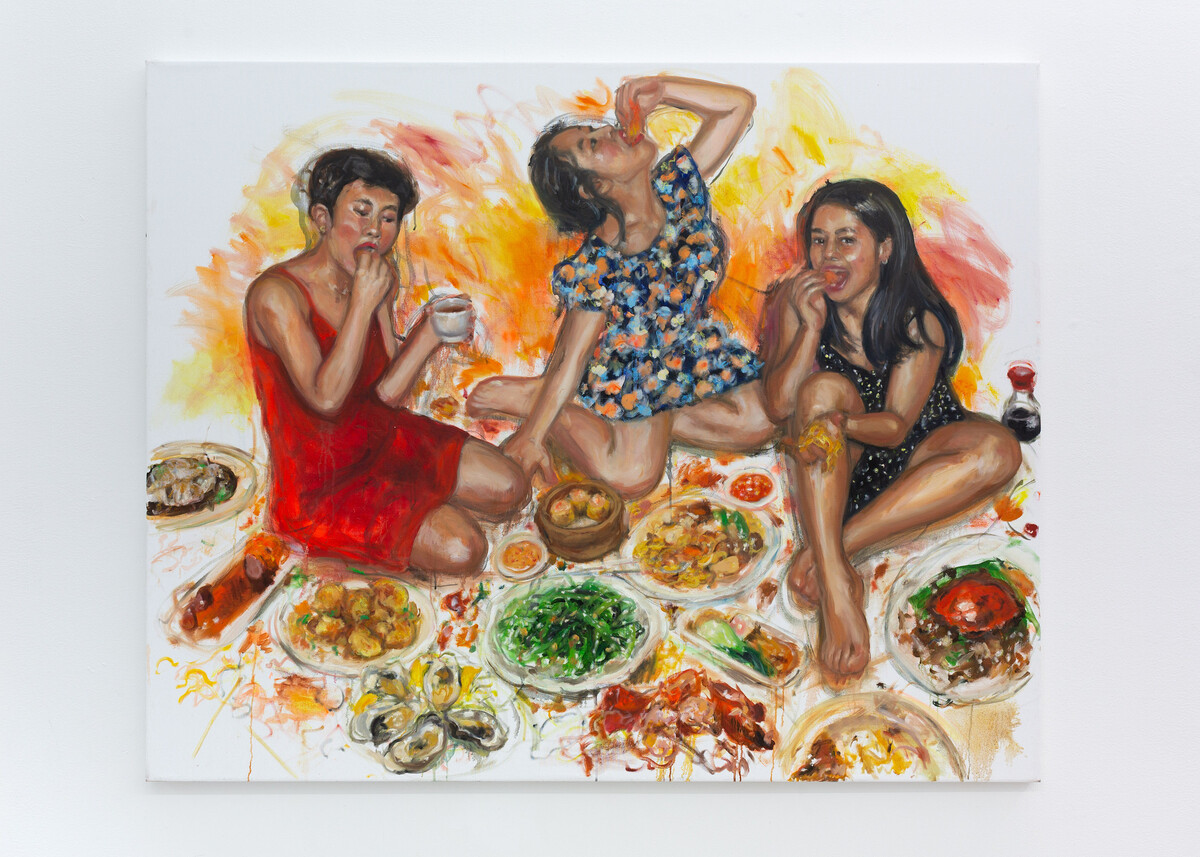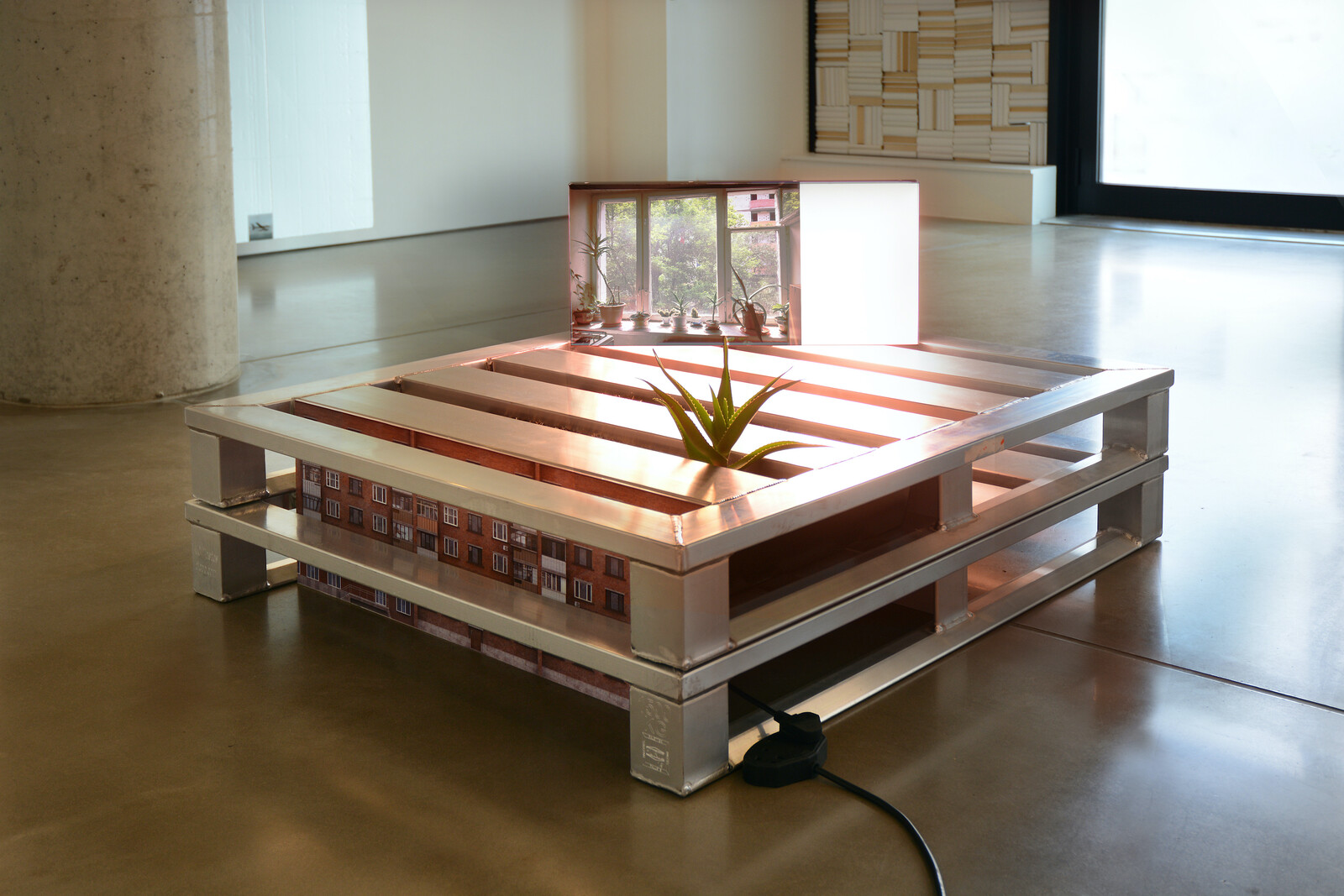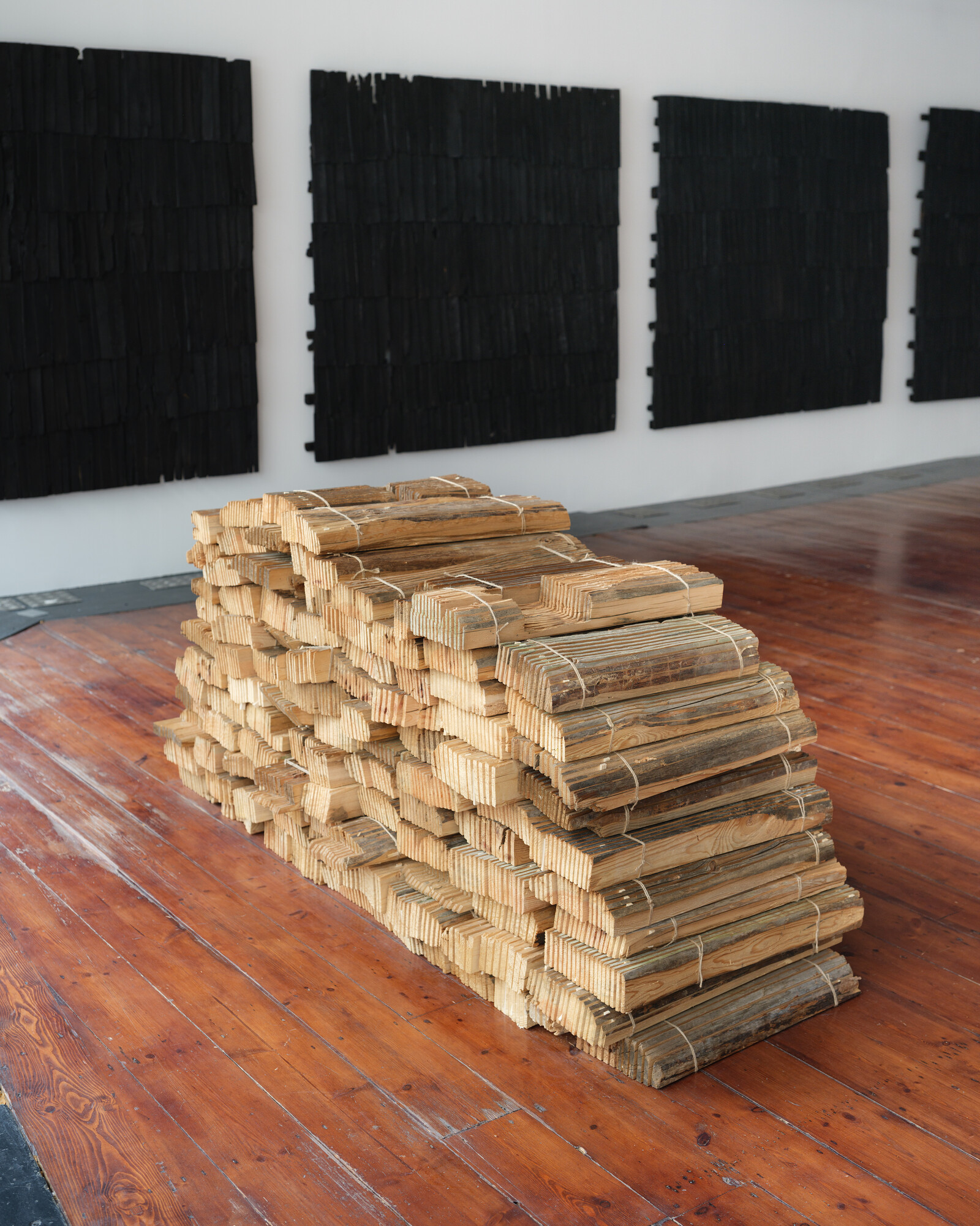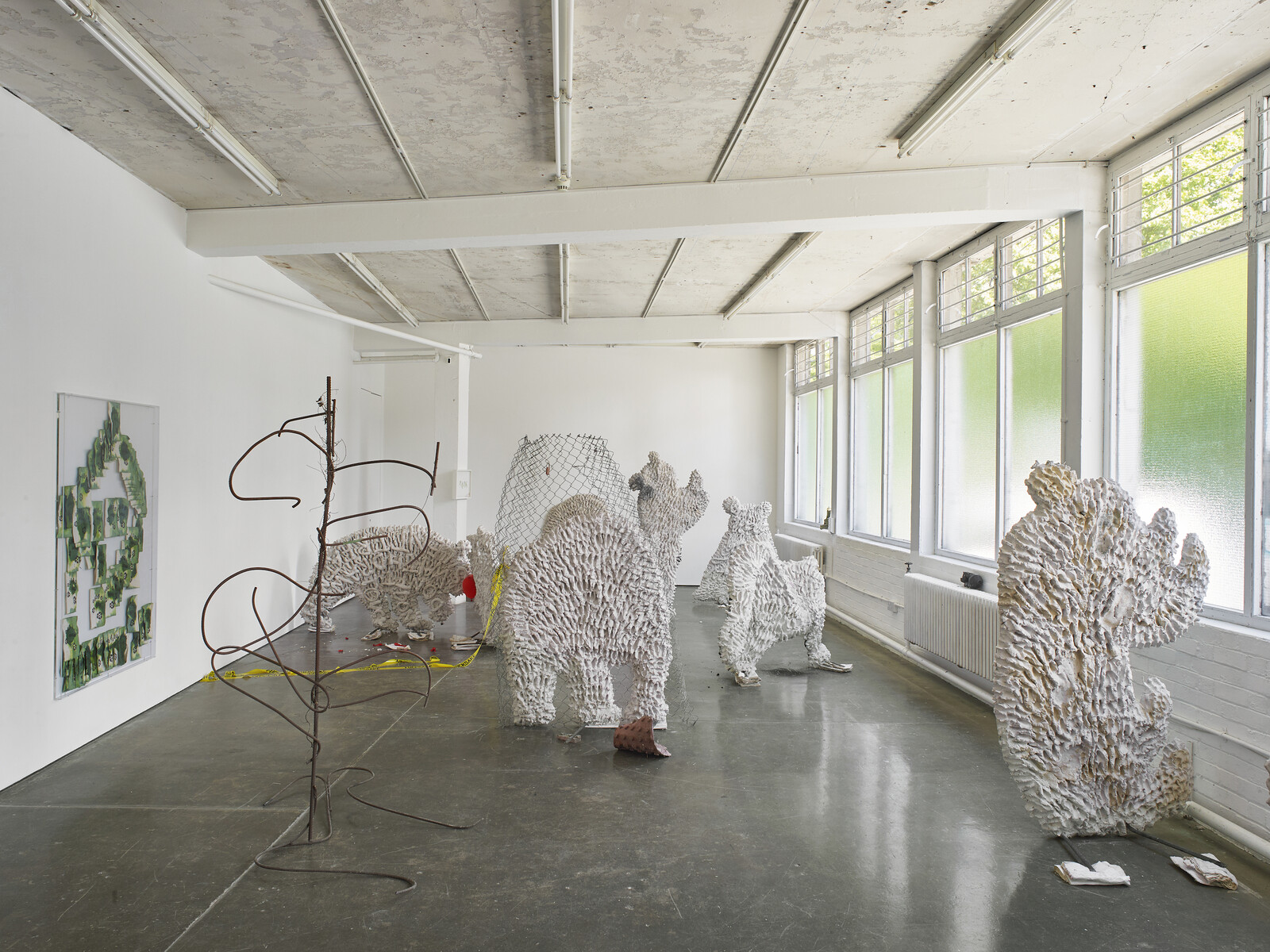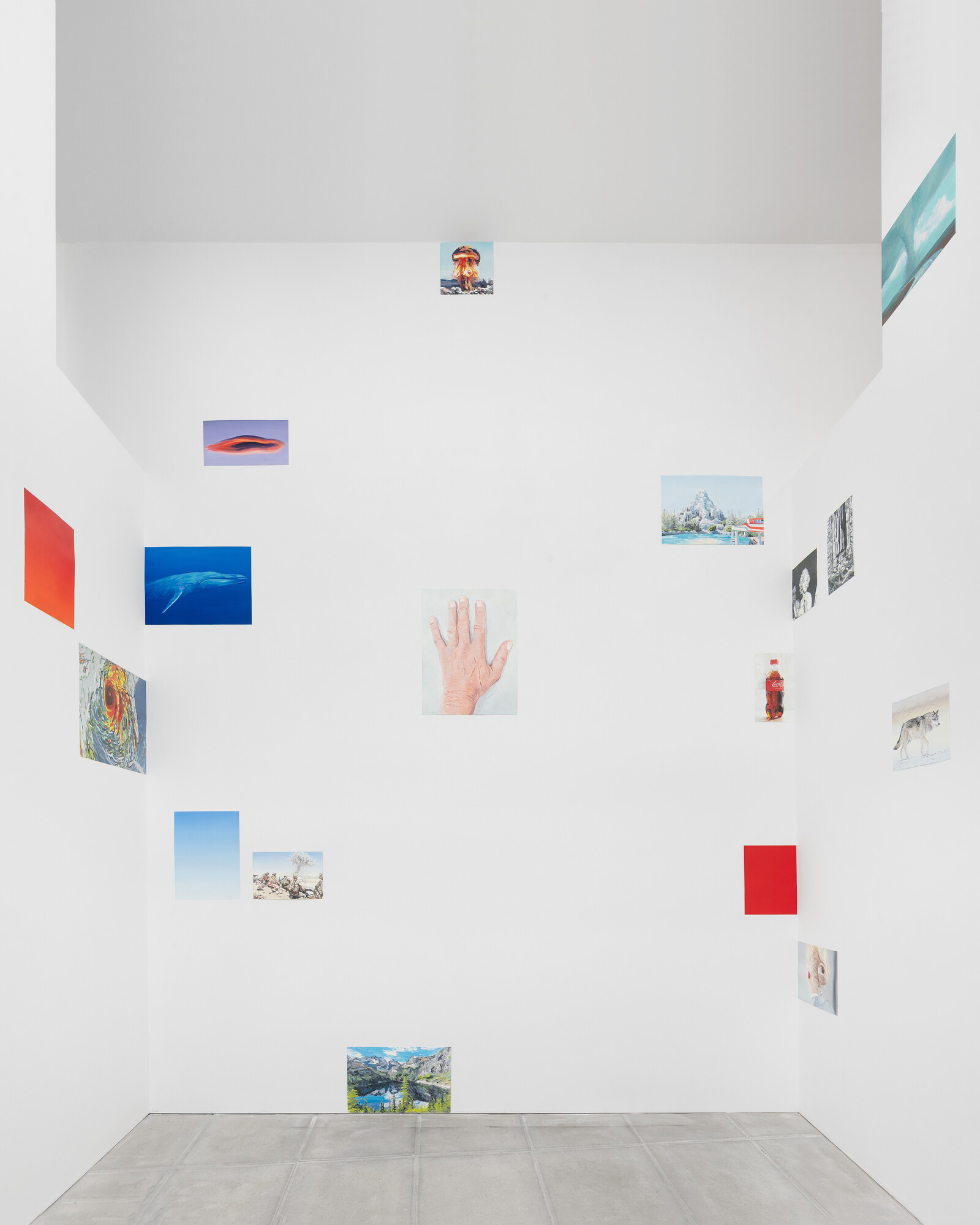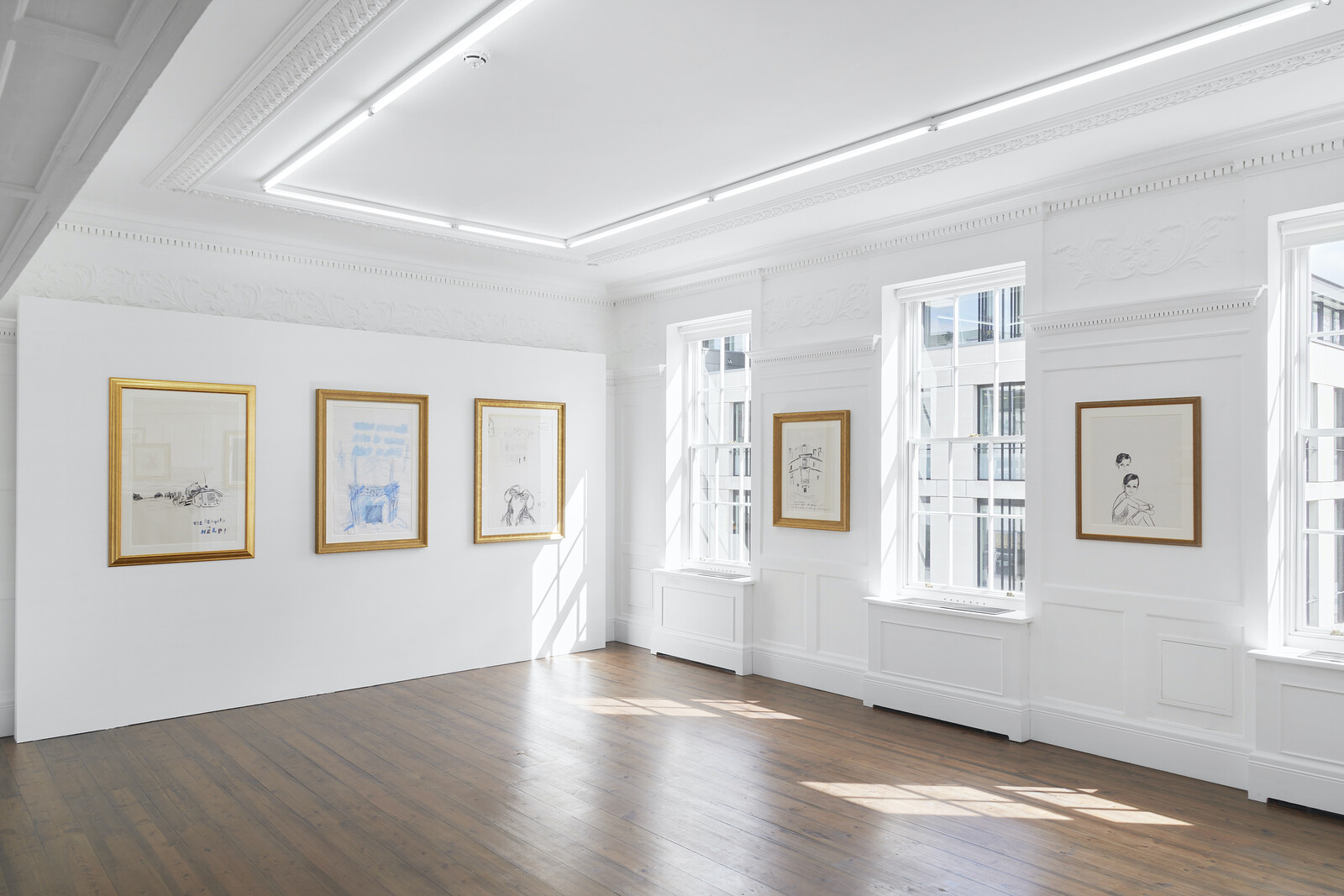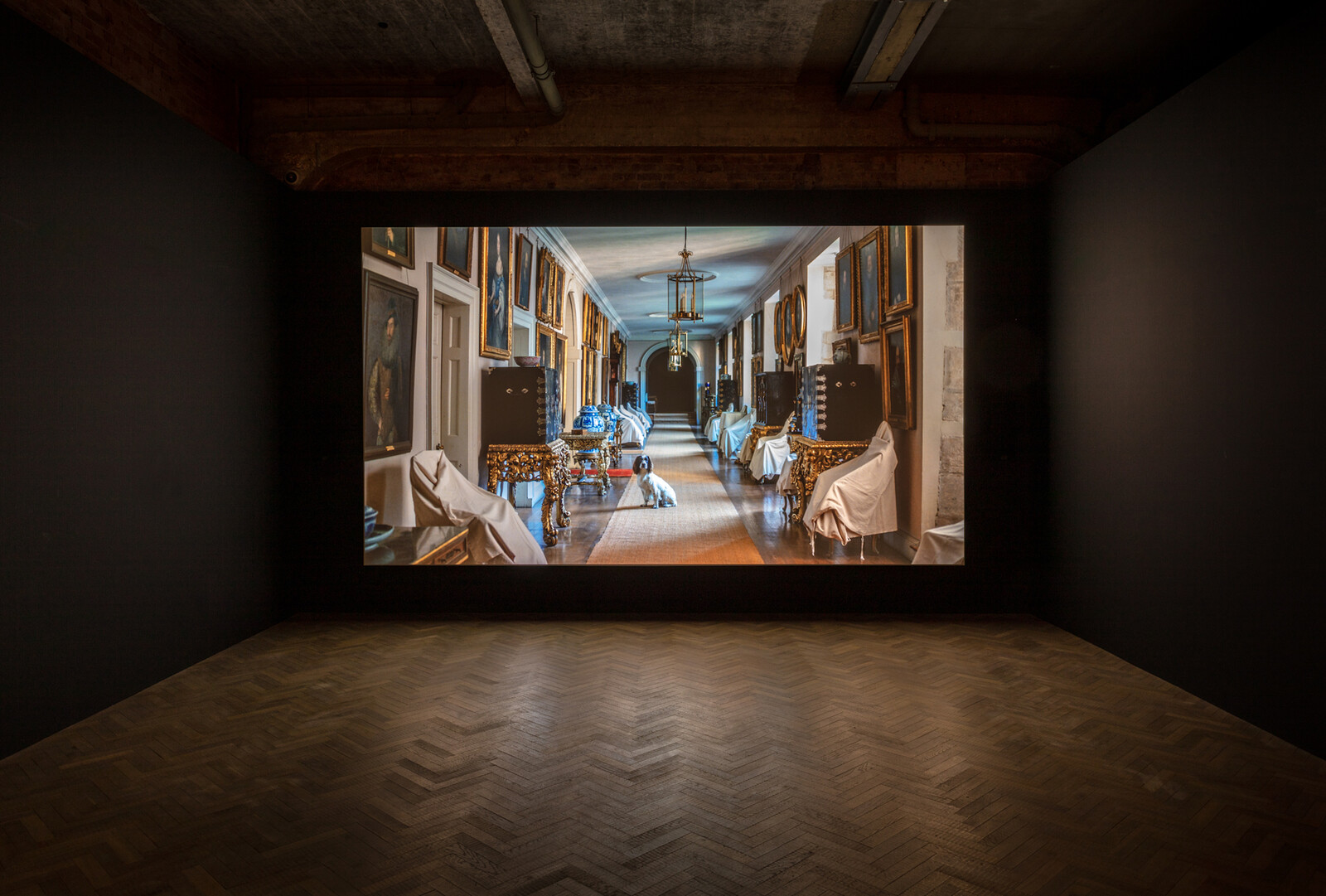In the local elections held the week before London Gallery Weekend, the residents of Westminster City Council, which covers much of central London, voted Labour into a majority for the first time since the council’s creation in 1964. The vote was partly informed by the Conservative council’s misguided decision, widely publicized in 2021, to spend six million pounds on the “Marble Arch Mound,” a twenty-five-meter-tall astroturf hill and viewing point designed to lure viewers back to the city’s busiest shopping district. It failed: many stores are still covered with for-rent signs, one of which peddled a “blank canvas for new ideas.” These are the visual and linguistic relics of the before-time: they represent old ideas of urban environments and their inhabitants’ habits, and beg the question, “What if we don’t want to return to how things were?”
At Emalin, Augustas Serapinas is displaying eight large black reliefs made of roof shingles taken from a wooden house from his home country, Lithuania. Many of these traditional architectures are now abandoned or destroyed and used for firewood. Serapinas bought one, broke it apart, charred its roof shingles, and repurposed them into monochromes that are part-painting, part-sculpture. They are heavy, loaded with their history of use and alteration: not a change that feels light and new, but one that reflects on decay and the disappearance of tradition. The works surround a large, neat pile of wood: the walls of the same house. They are drying in the bright gallery space, and at the end of the show will return to Lithuania to be used as shingles to build a new roof. The past is not an empty slate to overwrite, the work suggests, but rather something to build on.
History, in Serapinas’s work, is something to explore and maybe salvage. In Yuri Pattison’s exhibition “clock speed (the world on time)” at mother’s tankstation, time is considered as an artifice, a human construct. In the video clock speed (the dead) (2022), Pattison examines the way machine-learning systems experience time by exploring images of clocks or seasons fed to the Google DeepMind stock images. In two large panels, world clock, reflector timeline (east) and world clock, reflector timeline (west) (both 2022), GPS frequencies from US and Russian satellite navigation systems are transformed into sound. The panels—painted silver and collaged with images of sunsets, planes, stars—feel like they use a whole lot of technology (cables, amplifiers) to create something very small: a hum. Standing and listening to the paintings, they reverberate with meaning.
“Reverberating” would be an apt word to describe Jane and Louise Wilson’s The Toxic Camera (2012) at Maureen Paley. A work of fiction, the video is based on an account by Ukrainian filmmaker Vladimir Shevchenko of going to film the clean-up operations in Chernobyl just after the nuclear disaster in 1986. Shot in Suffolk, the images in the Wilsons’ video mirror a voiceover reimagining Shevchenko’s story. When he tells of seeing a glorious apple tree full of ripe apples, there is the image of an actor walking by an apple tree, stepping on the fallen apples (crunch crunch). The relationship between image and account feels so real that it’s hard to look at those English apples and not imagine that they, too, are toxic. Shevchenko’s original film stock was contaminated with radiation, as was his camera, and both were confiscated by the Soviet government. In the adjacent room is a bronze sculpture on a pedestal, Konvas Avtomat, The Toxic Camera (2012): a replica of the camera, a manifestation of missing evidence.
The witness account gives the images in The Toxic Camera a haunting hyperrealism, even though it’s clearly a stand-in for something else. At Herald St, Michael Dean makes a forest of sculptures: shaped like animals and trees, his figures (a bear, a koala) are made of construction rods, reinforced concrete, and sometimes rain-soaked books. Dean’s sculptures, so often human figures made of the same materials, now make up this faux-natural world. It’s far from realistic. The show is called “Jungle is Massive,” a playful title that contrasts with the sense that these heavy, enclosed creations are anything close to wild. Similarly, Cynthia Daignault’s exhibition at The Sunday Painter is called “Xanadu,” only the mythic place to which the title would attest is the American suburbs. Hung salon-style all over the gallery, Daignault presents four series of small paintings in oil on paper, a blizzard of images that intertwine quotidian subjects (a weather system, an armchair, a postbox) with recognizable images (JFK and Jackie in the car in Texas a moment before the shooting) in an arrangement that feels spacious and messy, never allowing the viewer to take it all in at once, only as an assortment of broken-up, still charming, snippets of the world.
The mundane details of life are often also the subjects of Karen Kilimnik’s drawings from 1976–1998, shown at Sprüth Magers. Some dozens of the artist’s works on paper give an impression of her interests (theater, literature, media), her life (city views and small biographic details like drawings of meals she’s had and people she’s met), and, especially, her humor (five cats at a dinner table toasting champagne coupes). These are rarely seen examples of the artist’s intuitive, quickfire, daily practice, an irreverent and fun compendium to her better-known paintings. Mundanity in all its allure is also on display in Caroline Wong’s paintings of women at indigo+madder. Xian Wei (umami) (2022) is a large-scale canvas portrait of three women sitting on the floor, legs folded, with food spread all around them. Think of Old-Master representations of women, from Leonardo’s Mona Lisa (c. 1503–06) to Delacroix’s Women of Algiers (1834), and the intensity of the eye contact they make with a presumptively male viewer. Wong’s portrayal of women feels independent, intimate, and real, far from an exoticizing, piercing gaze of another.
The abundance in these works—the richly detailed food in Wong’s painting, the all-over hanging of Daignault’s paintings, the sheer quantity of drawings by Kilimnick, the heavy materiality of Dean’s sculptures—foils the tendency to think about art as precious, fragile, requiring care. Amie Siegel’s video Bloodlines (2022), on view at Thomas Dane, shows the careful picking up, crating, and transportation of works by eighteenth-century English painter George Stubbs from aristocratic British homes for public exhibition elsewhere. Stubbs was famous for his paintings of horses and hunting scenes, and Siegel’s video, which shows art handlers driving up to estates, carefully removing the paintings from the walls and packing them, then unpacking and hanging them on the white walls of the gallery, interweaves these scenes with images of children riding ponies and masters of hounds leading fox hunts. It’s an intensely detailed and slow reflection of how cultural heritage is held in private hands; a cautionary tale that things don’t change, that these estates are reminders of the class lifestyle that Stubbs represented 250 years ago. It’s also a sensitive, gorgeously made document of how art is managed.
The works I was interested in most this weekend were ones that considered nuanced notions of transformation: of the exhibition space, time, the relationships between people and things, the world that surrounds us. One of the problems of the Marble Arch Mound was that it felt meaningless. A spectacle without no ideas behind it beyond scale, it was a transparently cynical attempt at encouraging commerce. Moving through the city for Gallery Weekend, I thought about how different a public artwork thought up by artists, not advertisers, could have been. Seeing exhibitions filled me with ideas about subjects as big as nature, human-made disaster, and heritage, but so many of the things I loved in these works were small—a hum and a crunch, a choice of material, an unexpected detail, a slowness of portrayal. Change, when it comes, can be small. Still, it offers a way to reject those flat visions that advertise our urban spaces back to us as a blank.
